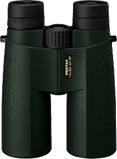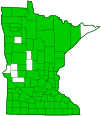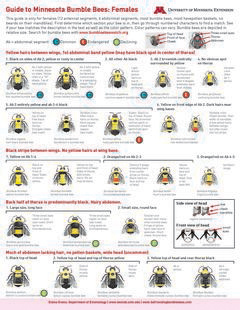Brown-belted bumble bee
(Bombus griseocollis)
Conservation • Description • Habitat • Ecology • Distribution • Taxonomy
Conservation Status |
|||
| IUCN Red List | LC - Least Concern |
||
| NatureServe | N5 - Secure |
||
| Minnesota | not listed |
||
Description
Brown-belted bumble bee is a very common, large, colonial, ground-nesting bumble bee. The thorax and first abdominal segment are yellow. The head and the rest of the abdomen is black.
The female (worker) bee is ⅜″ to 11 ⁄16″ long. The upperside of the thorax is mostly covered with short yellow hairs except for a small, round, black, bare spot in the middle that is more or less fringed with short black hairs. The light colored hairs are often very pale yellow, sometimes almost white.
There are six abdominal segments. The first segment is densely covered with yellow hairs. Segment 2 has a yellow spot in the middle at the leading (anterior) edge that extends less than half way to the trailing (posterior) edge of the segment, and a brown band along the leading edge that swoops below the yellow spot. Segments 3 through 6 are entirely black and densely covered with short black hairs.
The hairs on the head are mostly black including a dense tuft of hairs at the top (vertex). There are two large compound eyes, one on each side of the head; and three small simple eyes (ocelli) in a triangular pattern at the top of the head between the compound eyes. The middle ocellus is larger than the the two lateral ones. The top of the small (lateral) ocelli are on a virtual line (supraorbital line) with the top of the compound eyes. The antennae have 12 segments. The first antenna segment is slightly shorter than than the second and third combined.
The wings and legs are black.
The queen is similar but larger.
The male (drone) is similar but has much larger eyes, 7 abdominal segments, and 13 antennae segments. The hairs on the front and back of the head are yellow. Abdominal segments 3 through 7 are black but with evident yellow hairs at the margins.
Size
Queen: 13 ⁄16″ to ⅞″
Male: ⅝″ to ¾″
Worker: ⅜″ to 11 ⁄16″
Similar Species
Two-spotted bumble bee (Bombus bimaculatus) yellow spot on abdominal segment 2 extends nearly to the posterior edge of the segment. It may be indented in the middle appearing as two connected spots or a rounded “W”. The hairs on the back of the head of the female are yellow. The eyes on the male are not larger.
Habitat
Many kinds of areas with flowers, including prairies, meadows, agricultural fields, and urban gardens.
Ecology
Season
Late March to early October
Behavior
Bumble bees will sting to protect themselves or their nest. The stinger is not barbed and the bee can sting multiple times.
Life Cycle
Overwintering queens emerge from hibernation in late April. They build nests mostly underground but sometimes on the surface of the ground. The nests are usually small, with 50 or fewer individuals.
Larva Food/Hosts
Larvae are fed both nectar for carbohydrates and pollen for protein.
Adult Food
Adults feed mostly on nectar but also on some pollen.
Distribution |
||
|
Sources Biodiversity occurrence data published by: Minnesota Biodiversity Atlas (accessed through the Minnesota Biodiversity Atlas Portal, bellatlas.umn.edu, 10/28/2025). |
|
| 10/28/2025 | ||
Occurrence |
||
very common in eastern North America and in Minnesota |
||
Taxonomy
Order
Hymenoptera (Ants, Bees, Wasps, and Sawflies)
Suborder
Apocrita (Narrow-waisted Wasps, Ants, and Bees)
Infraorder
Aculeata (Ants, Bees, and Stinging Wasps)
Superfamily
Apoidea (Bees and Apoid Wasps)
Epifamily
Family
Apidae (honey bees, bumble bees, and allies)
Subfamily
Apinae (honey, bumble, longhorn, orchid, and digger bees)
Tribe
Bombini
Genus
Subgenus
Cullumanobombus
Subordinate Taxa
Synonyms
Bombus separatus
Common Names
brown-belted bumble bee
Glossary
Ocellus
Simple eye; an eye with a single lens. Plural: ocelli.
Minnesota Bumble Bee Identification Guide
The University of MN Bee Lab has a free field identification guide to Minnesota bumble bees. It is indispensable for amateur naturalists or anyone wanting to identify the bumble bee in their photo. Click on the image below to download the guide.
Visitor Photos
Share your photo of this insect.
This button not working for you?
Simply email us at info@MinnesotaSeasons.com.
Attach one or more photos and, if you like, a caption.
Bill Reynolds |
||
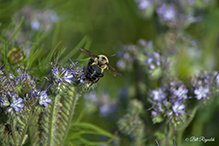 |
||
It's (Lacy Phacelia) a big hit with many types of insects including the fall migrating Monarchs. |
|
|
A male Brown-belted Bumble Bee hanging out of a Canadian Goldenrod. |
||
 |
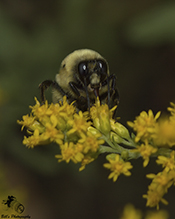 |
|
 |
||
Dan W. Andree |
 |
Woolly Milkweed and... I came across this woolly milkweed and bumble bee feeding on it. I believe it's a half black bumble bee. This one was fairly large far as a half black goes. Anyway it was neat to see again this season. |
Alfredo Colon |
||
 |
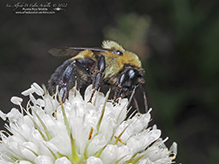 |
|
 |
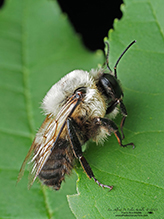 |
|
 |
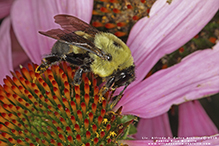 |
|
Mike Poeppe |
||
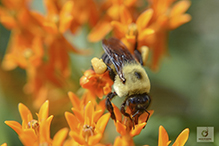 |
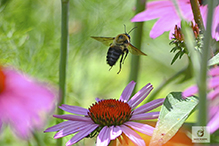 |
|
Luciearl |
||
 |
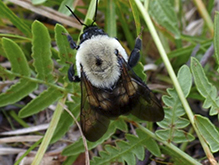 |
|
Margot Avey |
||
It looked very large even on a sunflower! |
||
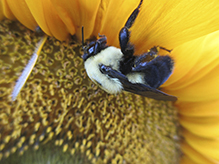 |
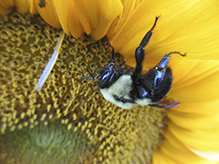 |
|
Christa Rittberg |
||
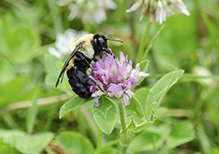 |
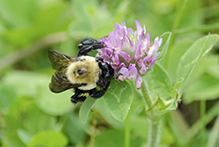 |
|
MinnesotaSeasons.com Photos
|

Slideshows
Bombus griseocollis
USGS Bee Inventory and Monitoring Lab
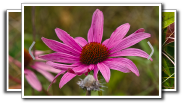
Visitor Videos
Share your video of this insect.
This button not working for you?
Simply email us at info@MinnesotaSeasons.com.
Attach a video, a YouTube link, or a cloud storage link.
Other Videos
Bombus griseocollis
prairieshiksa
B. griseocollis
Joseph Napper
B. griseocollis nest
Joseph Napper
(HD Macro) Brown-belted Bumblebee Closeup [Mini-Documentary]
Mantisman630
Brown-belted Bumblebee: Nature vlog #13
Secret Nature

Visitor Sightings
Report a sighting of this insect.
This button not working for you?
Simply email us at info@MinnesotaSeasons.com.
Be sure to include a location.
Bill Reynolds
10/4/2025
Location: Numedal TWP., Pennington Co., Minnesota
It's a big hit with many types of insects including the fall migrating Monarchs.
Dan W. Andree
6/6/2025
Margot Avey
8/31/2019
MinnesotaSeasons.com Sightings
